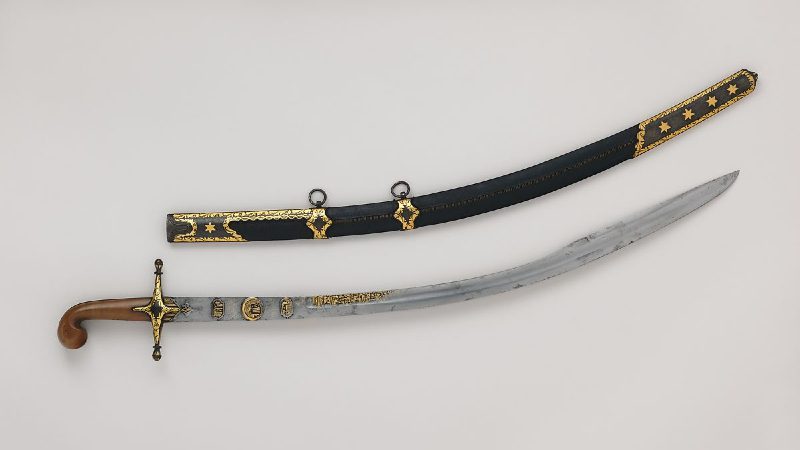The History of Swords Around the World

Nearly every culture has forged blades to win battles and provide protection during times of peace. Each culture has contributed unique styles and techniques to the art of sword-making. Swords have left their mark on civilizations throughout the ages, becoming not only weapons of war but also symbols of power, honor, nobility, and status.
Let’s delve into the history of swords from around the world, exploring how they developed over time and how they were influenced by advancements in armor and evolving battlefield tactics.
The Ancient World (3000 BCE – 500 CE)
The earliest blades were made of stone, usually flint or obsidian, serving as practical tools and weapons. The discovery of copper led to the production of the first metallic weapons, though copper blades could not retain a sharp cutting edge.
It was only with the discovery of bronze around 3000 BCE that swords began to emerge. However, bronze swords could be easily damaged in combat. The invention of iron revolutionized sword production, leading to the development of more lasting and lethal weapons.
Mesopotamia and Egypt
The primary weapons of Mesopotamian and ancient Egyptian soldiers were spears and bows. Swords were rare due to the cost of their production. By around 1000 BCE, swords became popular when Middle Eastern warriors encountered sword-wielding enemies from other territories. The invasions from enemies also resulted in the development of edged weapons capable of penetrating armor.

Besides being used for battle, some Sumerian daggers had blades and scabbards made of gold, serving as ceremonial weapons. In Egypt, swords were likely introduced by invaders from the eastern Mediterranean, known as the Sea Peoples. Egyptian short swords and daggers were made from copper, bronze, and rarely iron. The sickle sword khopesh also came into use.
Bronze- and Iron-Age Europe

The Bronze Age and Iron Age in Europe were home to several warrior peoples, including the Celts, a group of tribal peoples who migrated from central Germany to Western Europe around 1000 BCE. The Celts made the first iron swords in Europe about the 7th century BCE. However, these iron swords easily bent in combat, so warriors had to straighten them by foot.
Ancient Greece

In Ancient Greece, the archetypal sword was the xiphos, though the kopis was also used as a powerful slashing weapon. Such swords were used by the Hoplites, the infantry force of Ancient Greece, which in turn influenced Roman and Middle Eastern blades. Although daggers were little known in the Greek world, axes were sometimes used to break enemy shields and armor.
Ancient Rome

The Roman legions were the most formidable army of the ancient world, and each foot soldier was equipped with a short sword gladius for hand-to-hand fighting. On the other hand, the cavalrymen who needed a long reach used the long sword spatha. By the 2nd century CE, the cavalry sword spatha replaced the gladius and became the sword of the Late Roman period.
The Middle Ages (500 – 1500)
During the medieval period, developments in swords were taking place across the world. Medieval swords evolved as metallurgy improved, and designs became increasingly diverse and sophisticated. Swords also became a symbol of status and prestige and were often handed down through the generations.
Medieval Europe

The Roman long sword spatha remained in use and evolved into the Carolingian or Viking sword. By 1000, the slashing swords of the Vikings evolved into the classic knightly sword, also called the arming sword, with longer crossguards to protect the hand. Knights generally fought mounted on horseback, and swords served as secondary weapons after the lance broke.

Around 1300, the quality of the armor improved and influenced European sword design. Slashing swords were useless against plate armor, so swords acquired sharp tapering blades for thrusting. Still, there were single-handed falchions that relied on heavy blades for cutting and were too unbalanced to thrust well.
By the 14th century, longswords with a longer grip became the most popular, allowing the use of one or two hands to deliver extra force. By the 15th century, bastard swords with narrower, tapered blades and complex hilts emerged. Their crossguards became more elaborate, with additional features like side rings and knuckle guards for extra protection.
The Islamic World

In the Islamic world, sword design favored single-edged swords with curved blades, generally called by Europeans as scimitars. This region consisted of the Arabian Peninsula, the Middle East, North Africa, and Central Asia.
Islamic swords were ideal for the cavalry-style warfare of Muslim armies and were often decorated with religious inscriptions and scrollwork. Such blades include the Arabian saif, Ottoman kilij, Persian shamshir, and others.
Asia

Asian swordsmiths also produced single-edged swords with curved blades. In medieval Japan, it began with the emergence of swords designed for the samurai class. At the time, the Japanese katana was only worn by the samurai warriors and later paired with a short sword called wakizashi.

In China, two classic sword types emerged: the jian and the dao. The jian is a straight sword with a double-edged blade, while the dao is a deeply curved, single-edged sword. The curved dao mainly suited the warfare style of the Chinese cavalry.
The Early Modern World (1500 – 1775)
The craft of swordmaking reached its peak in the early modern period. Despite the popularity and widespread use of firearms, the sword remained the weapon of the military elite, mainly the cavalry. Various types of swords emerged, and some became a significant part of civilian fashion.
Renaissance Europe

The two-handed swords, also called great swords, became popular in Europe, particularly in Germany. The German two-handed sword, the zweihander, was a specialized weapon for hacking into enemy pike units and was later used for ceremonial occasions. The Scottish Highlanders also had their claymore used from the 15th to the 17th century.

From the 16th century onwards, infantry swords, used by foot soldiers, tended to be used as thrusting weapons. On the other hand, cavalrymen needed to slash downward at infantry and relied on various types of broadswords with basket hilts. By the 17th and 18th centuries, the cavalry also used sabers or swords with curved blades.

In the 16th century, the thrusting sword rapier became the dueling and civilian weapon used throughout Europe. It had elaborate hilt designs, especially the Italian rapier with a swept-hilt guard. Rapiers had cup-hilt guards in Spain and parts of Italy under Spanish influence. By the 17th century, the smallsword had become the preferred weapon for duels.
Asia

During the 16th century, the establishment of the Mughal Empire in India introduced the curved swords prevalent in the Islamic world. The talwar was the typical sword of the Mughal Empire, and many were of outstanding craftsmanship.

South and Southeast Asian swords also had regional designs, such as the Malayan kris and the Sri Lankan kastane. In Japan, Japanese smiths continued the tradition of samurai sword production, even though the Tokugawa Shogunate limited sword ownership.
The Revolutionary World (1775 – 1900)
By the end of the 18th century, swords started to decline as firearms became more powerful and sophisticated. Still, some swords remained in use in close-quarters combat, and officers wore dress swords to distinguish them from their men.
Europe

During the French Revolution (1787 – 1799) and Napoleonic Wars (1801 – 1815), cavalry swords evolved into straight thrusting swords and curved sabers for slashing. British general John Le Marchant developed the 1796 Light Cavalry Sword, which proved to be an effective cutting weapon. On the contrary, infantry swords became ceremonial weapons carried by officers and senior NCOs.

During the Napoleonic Wars, the British Army also used a sword bayonet designed for the Baker rifle. This sword bayonet could be used alone or attached to the rifle. It was unwieldy but necessary to compensate for the relatively short rifle compared to other weapons used.

In the late 18th century, an ordinary sailor typically used a simple cutlass, a pistol, and a boarding pike. However, naval officers used various types of swords, including spadroons with distinctive five-ball hilts and decorative ceremonial swords.

Also, fencing became much safer with the development of fencing swords, such as the foil and the saber. By the 19th century, épée was introduced as a sporting version of the smallsword. Fencing became a prominent sport and was featured in the first modern Olympic Games in 1896. Since then, it has remained a significant part of the event.
United States of America

The sword makers of the newly independent United States of America followed patterns of the British, German, and French swords. By the American Civil War (1861 – 1865), US swords were inspired by French designs. The notable examples included the 1840 Heavy Cavalry Saber and the 1860 Light Cavalry Saber.
However, the Civil War between the Northern Union and the Confederate South widely used cannon and muskets, which made swords impractical for open battles. As a result, officers rarely used swords in actual combat, though they continued to wear them as a symbol of rank.
China

During the 19th century, the declining Qing Empire strived to develop firearms to match European ones. Still, swords continued to be used as weapons and ceremonial arms. The straight sword jian was the weapon of choice for Chinese swordsmen to show off their skills. High-ranking officials also wore it as part of their ceremonial regalia.
Japan

During the Meiji era (1868 – 1912), the government began to modernize the Japanese army and navy. While swords were no longer practical, military officers still carried them. They introduced the gunto or military sword, initially with a traditionally forged Japanese sword blade. By 1899, the government mass-produced swords for the military that were forged using modern machines.
Africa

African blades were more diverse in shapes and purposes than those in Europe and Asia. Many of them were in long use after the European colonial powers took over parts of Africa during the 19th century. Most recognized for its animal head pommel, the flyssa sword of the Kabyle people was worn in parts of Africa well into the 19th century.
The Modern World (1900 – Present)
By the 20th century, the sword saw its final decline as a combat weapon, as soldiers today fight with guns, bombs, artillery, and missiles. However, swords continue to fulfill their ceremonial roles, often as a standard part of officers’ dress uniforms. Also, they continue to be studied and practiced in various martial arts disciplines around the world.


